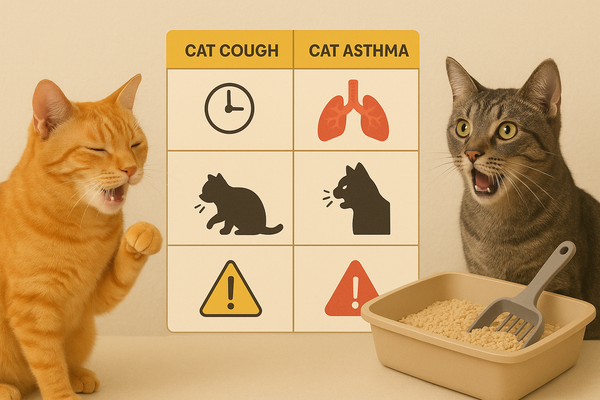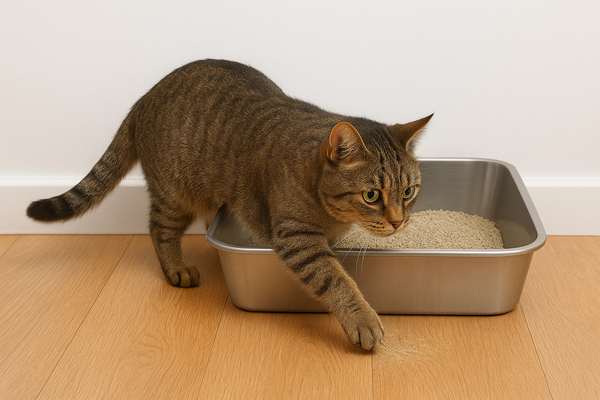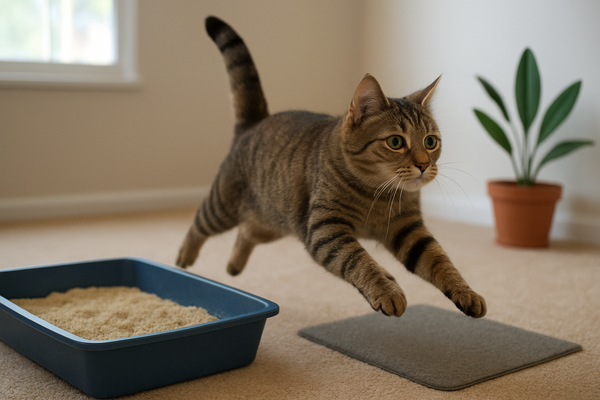
Catnip, also known as Nepeta cataria, has intrigued cat owners and scientists alike for centuries. This herb, belonging to the mint family, is renowned for its ability to induce euphoric and playful behavior in many felines. But does it really work? And if so, how? In this comprehensive exploration, we’ll delve into the science behind catnip, its effects on cats, and whether it's truly beneficial or just a quirky pastime.
What is Catnip?
Catnip is a perennial herb that grows up to three feet tall, with heart-shaped leaves and small, white to purple flowers. Native to Europe and Asia, it has spread across the globe and is now common in gardens and herbal remedies. Its active ingredient, nepetalactone, is responsible for the distinctive effects on cats.
Nepetalactone is a compound found in the leaves, stems, and seeds of the catnip plant. When cats come into contact with it, whether by smelling, ingesting, or rubbing against it, they often exhibit dramatic behavioral changes.
How Does Catnip Affect Cats?
The effects of catnip on felines are often dramatic and entertaining. Cats might roll around, rub their face on the herb, purr, meow loudly, or even exhibit playfulness and aggression. To understand why, we need to dive into the science of how nepetalactone works.
1. The Olfactory Response
Nepetalactone is volatile, meaning it easily evaporates into the air. When a cat smells catnip, the compound binds to receptors in the olfactory system. This system is responsible for the sense of smell and includes the olfactory bulb and other brain structures involved in processing scents.
Nepetalactone specifically targets the olfactory receptors, which send signals to the brain’s limbic system—a region associated with emotions and behavior. This stimulation leads to the characteristic reactions, which can include excitement, curiosity, and playfulness.
2. The Genetic Component
Not all cats respond to catnip. Sensitivity to catnip is hereditary, with about 50-75% of cats showing a reaction. Kittens and elderly cats are less likely to react because their olfactory systems may not be fully developed or as responsive.
The sensitivity to catnip is governed by a single gene. If a cat inherits this gene, it will likely react to catnip; if not, it will remain indifferent. This genetic trait affects the ability to perceive and respond to nepetalactone.
The Effects of Catnip: What’s Normal?
When a cat reacts to catnip, it can display a range of behaviors, from extreme excitement to complete relaxation. These reactions are generally harmless and short-lived, typically lasting about 10-15 minutes. After exposure, cats may become temporarily desensitized and will not react to catnip again for a while. This is due to a refractory period, during which the olfactory receptors need time to reset.
Here are some common reactions:
- Playfulness: Cats might exhibit a burst of energy, engaging in playful behavior like chasing imaginary prey or pouncing.
- Euphoria: Some cats seem to enter a state of bliss, rolling on the floor, purring, and rubbing their face against the catnip.
- Aggression: A minority of cats may become more aggressive or territorial, though this is less common.
Is Catnip Safe for Cats?
In general, catnip is safe for most cats. The effects are temporary, and there are no known long-term adverse effects associated with its use. However, there are a few considerations to keep in mind:
- Overuse: Excessive exposure to catnip might lead to temporary gastrointestinal upset in some cats. Moderation is key.
- Allergies: Though rare, some cats might have an allergic reaction to catnip. Symptoms might include itching, swelling, or digestive issues.
- Behavioral Changes: If a cat shows signs of aggression or excessive anxiety, it may be wise to limit exposure to catnip or consult a veterinarian.
The Benefits of Catnip
Beyond entertainment, catnip can have several benefits for cats:
1. Enrichment and Exercise
Catnip can provide mental and physical stimulation. Engaging with catnip toys encourages play, which is essential for a cat’s health. Playtime helps prevent obesity, stimulates the mind, and satisfies natural hunting instincts.
2. Stress Relief
For some cats, catnip can serve as a tool for stress relief. It can help alleviate anxiety or boredom, especially in indoor cats. The temporary euphoric state induced by catnip might act as a form of distraction and relaxation.
3. Training Aid
Catnip can be used as a training aid. It’s often employed to encourage cats to use scratching posts or beds. By sprinkling catnip on these items, owners can attract their cats and make them more appealing.
The Science Behind Catnip’s Euphoria
Understanding why catnip affects cats the way it does involves a deep dive into biochemistry and neurology. Nepetalactone is a terpenoid, a type of compound found in many plants that often has a strong aroma. This compound mimics pheromones—chemicals that animals use for communication.
1. Pheromone Mimicry
Nepetalactone is thought to mimic feline pheromones, which are chemicals involved in mating behavior. When a cat detects nepetalactone, it may experience sensations similar to those triggered by pheromones, leading to heightened playfulness or excitement.
2. Neurochemical Effects
The limbic system, responsible for emotional responses, is heavily involved in the reaction to catnip. The stimulation of this system leads to the pleasurable and euphoric sensations that many cats experience. This reaction is similar to the effects of certain recreational drugs on humans, though much milder and transient.
Alternatives to Catnip
For cats that do not respond to catnip or if you’re looking for variety, there are alternatives:
- Silvervine: Another plant that can induce a similar response in some cats. It’s a good option for those who don’t react to catnip.
- Valerian Root: Known for its calming effects on humans, valerian root can also stimulate cats similarly to catnip.
- Tatarian Honeysuckle: This plant can produce a similar effect, especially in cats who are less responsive to catnip.
Conclusion
In summary, catnip does indeed "work" on many cats, producing a range of enjoyable and sometimes amusing behaviors. The effects are due to the chemical nepetalactone, which interacts with a cat’s olfactory system and brain. While not all cats respond to catnip, those who do can benefit from the mental and physical stimulation it provides.
The safety profile of catnip is generally good, with few risks involved when used in moderation. It’s a tool for enrichment, stress relief, and training, offering both cats and their owners a unique and engaging experience. Whether you’re a cat owner looking to spice up your feline’s life or simply curious about this fascinating herb, catnip remains a delightful and scientifically intriguing subject.
As with any aspect of pet care, observing your cat’s individual responses and adjusting accordingly ensures that the benefits of catnip are enjoyed safely and effectively.



